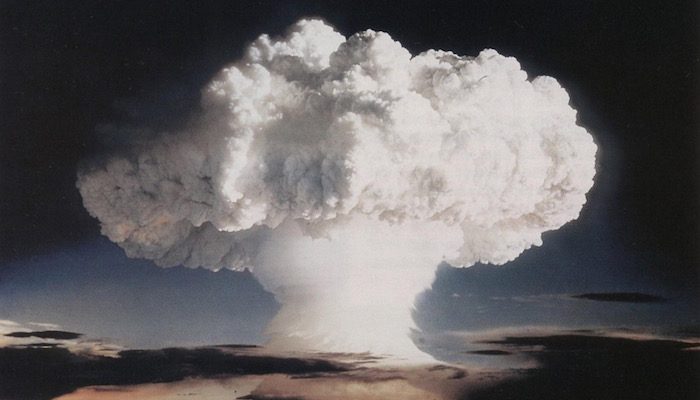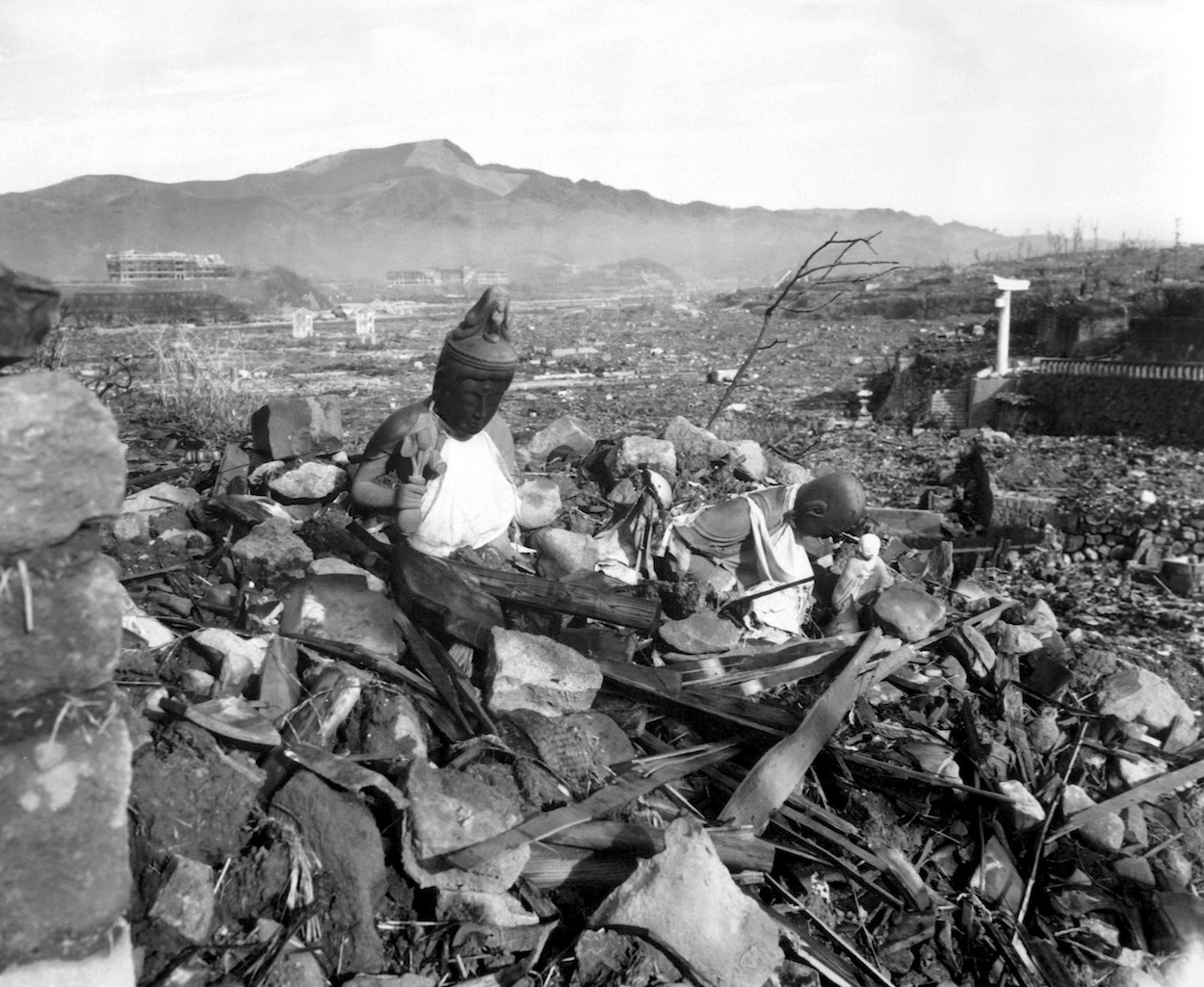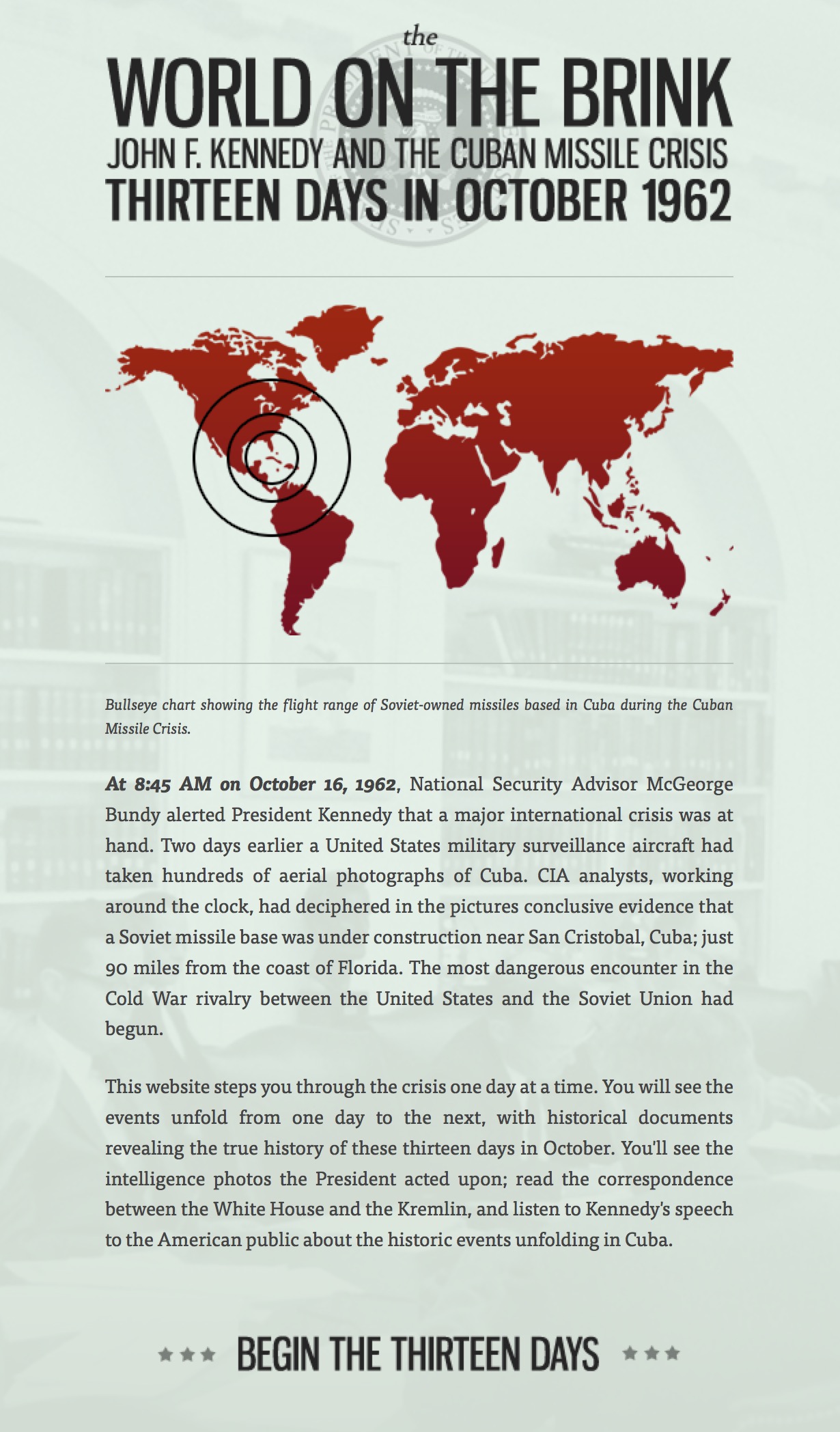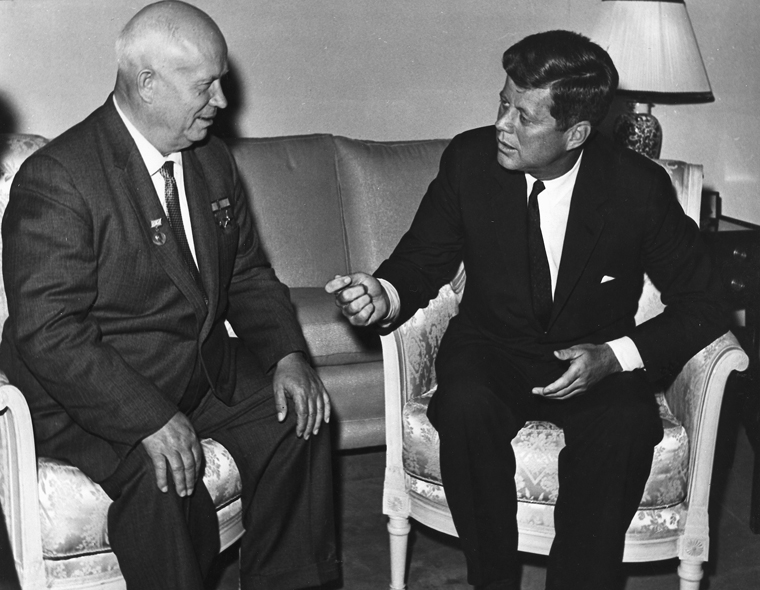
E-IR’s spotlight series invites academics to reflect on significant events, drawing on multimedia resources to bring the subject to life for students.
After the first use of an atomic bomb by the US on Japan in August 1945 the world was transformed. Reports and pictures of the total devastation caused by the two bombs that the US dropped on Nagasaki and Hiroshima confirmed that the nature of warfare had changed forever. As one reporter described the scene: ‘There is no way of comparing the Atom Bomb damage with anything we’ve ever seen before. Whereas bombs leave gutted buildings and framework standing, the Atom bomb leaves nothing.’

Real footage of the bombing was taken by the US pilots who flew the mission (below). And, many documentaries have been made (such as this one) that reconstruct events.
Although the US was the first state to successfully detonate a nuclear bomb, other nations were also researching the technology. The second state to successfully detonate a bomb was the USSR (1949). The United Kingdom (1952), France (1960) and China (1964) followed. As the number of nations possessing nuclear weapons increased from one to five, there were genuine fears that these dangerous weapons would proliferate uncontrollably to many other nations.
Proliferation was not only a numbers issue. As the weapons quickly developed in sophistication from those dropped in Japan they became many orders of magnitude more destructive, representing a grave threat to mankind as a whole. By the early 1960s, nuclear weapons had been built that could cause devastation for hundreds of kilometres beyond the impact zone. The US and the USSR, who were locked into system of rivalry known as the Cold War, seemed to be in a race to outdo each other in terms of quantity and quality of bombs each possessed. The Cold War was known as such because the presence of nuclear weapons on both sides made a traditional war between the two almost unfathomable. If somehow they were to end up engaged in a direct conflict they each had the power to destroy the other entirely and in doing so jeopardise human civilisation as a whole.
It may seem strange but, despite their offensive power, nuclear weapons are primarily held as defensive tools – unlikely to be ever used. This is due to a concept known as deterrence. By holding a weapon that can wipe out an opponent, such an opponent is unlikely to attack you. Especially if your weapons can survive that attack and allow you to retaliate. In an environment as insecure as the Cold War, gaining a nuclear arsenal was a way to achieve deterrence and a measure of security that was not otherwise attainable. This was obviously an attractive option for nation-states. For this reason, any hope of creating an international regime of moderation over nuclear weapons seemed doomed during the Cold War.
The UN, which was created in 1945 in part to give international diplomacy a focal point and create a more secure world, attempted in vein to outlaw nuclear weapons in the late 1940s. Following that failure, a series of less absolute goals were advanced, most notably to regulate the testing of nuclear weapons. Weapons that were being developed required test detonations, and each test released large amounts of radiation into the atmosphere which endangered ecosystems and human health.
By the late 1950s high level diplomacy under a UN framework had managed to establish a moratorium on nuclear testing by the US and USSR. However, by 1961 a climate of mistrust and heightened tensions between the two nations caused testing to resume. One year later, in 1962, the world came to the brink of nuclear war in what is now known as the Cuban Missile Crisis when the USSR sought to place nuclear warheads in Cuba, a small island nation in the Caribbean less than 150 kilometres from US soil. Cuban leader Fidel Castro had requested the weapons to deter the US from meddling in Cuban politics following a failed US-sponsored invasion by anti-Castro forces in 1961. As Soviet premier Nikita Khrushchev (1962) put it ‘the two most powerful nations had been squared off against each other, each with its finger on the button.’
 After pushing each other to the brink, US president John F. Kennedy and Khrushchev found that via diplomacy, they could agree to a compromise that satisfied the basic security needs of the other. Over a series of negotiations Soviet missiles were removed from Cuba in return for the US removing missiles they had deployed in Turkey and Italy. As the two sides could not fully trust each other due to their rivalry, the diplomacy was based (and succeeded) on the principle of verification by the United Nations who independently checked for compliance.
After pushing each other to the brink, US president John F. Kennedy and Khrushchev found that via diplomacy, they could agree to a compromise that satisfied the basic security needs of the other. Over a series of negotiations Soviet missiles were removed from Cuba in return for the US removing missiles they had deployed in Turkey and Italy. As the two sides could not fully trust each other due to their rivalry, the diplomacy was based (and succeeded) on the principle of verification by the United Nations who independently checked for compliance.

In July 1963 the Partial Test Ban Treaty was agreed, confining nuclear testing to underground sites only. It was not a perfect solution, and only the US, United Kingdom and the USSR signed it. But, it was progress. Building further, the 1970s opened with the entering into force of the Treaty on the Non-Proliferation of Nuclear Weapons (1970) – often known as the Non-Proliferation Treaty (NPT). The NPT sought to channel nuclear technology into civilian uses and to recognise the destabilising effect of further nuclear weapons proliferation on the international community. It was a triumph of diplomacy. The genius of the treaty was that it was aware of the realities of the international politics of the time. It was not a disarmament treaty as great powers would simply not give up their nuclear weapons over the fear that it would diminish their security. So, instead of pursuing an impossible goal of eliminating nuclear weapons, the NPT sought to freeze the number of nations that had nuclear weapons at the five nations who already possessed them: the US, the USSR, the United Kingdom, France and China. Simultaneously, those five nations were encouraged to share non-military nuclear technology with other nations – such as civilian nuclear energy – so that those nations would not feel tempted to pursue nuclear weapons. In short, those who had nuclear weapons could keep them. Those who didn’t have them would be allowed to benefit from the non-military research and innovation of the existing nuclear powers.
Due to the nature of how well the treaty is designed and enforced it has been deemed highly successful. Following the end of the Cold War, the NPT was permanently extended in 1995. Granted, it has not kept the number of nuclear nations to five, but there are now less than ten – which is far from the twenty or more that were projected by diplomats on both sides of the Atlantic before the treaty entered into force in 1970. States with nascent nuclear weapons programmes, such as Brazil and South Africa, gave them up due to international pressure to join the NPT. Today, only a small number of states are outside the bounds of the treaty, which now lists all but a few UN member states: India, Pakistan and Israel never joined the treaty as they (controversially in each case) had proliferation ambitions that they were not prepared to give up on due to their respective national security priorities. Underlining the weight of the NPT, when North Korea decided to rekindle earlier plans to develop nuclear weapons, they withdrew from the treaty in 2003 rather than risk sanction for violating it. North Korea remains the only nation ever to withdraw from the NPT.
Due to the NPT, non-proliferation has become the normal and expected state of affairs in international relations. The non-proliferation regime is not perfect of course – a situation best underlined by North Korea’s quest to proliferate despite international will. Yet, while humankind has developed the ultimate weapon in the nuclear bomb, diplomacy has managed to prevail in moderating its spread. When a nation is rumoured to be developing a nuclear bomb, such as in the case of Iran, the reaction in the international community is always one of common alarm. In IR we call ideas that have become commonplace ‘norms’. Due to skilful diplomacy in decades gone by, non-proliferation is one of the central norms underpinning our international system. In short, we have come a long way from the dark days of 1945.